| |
|

MONDAY, SEPTEMBER 1
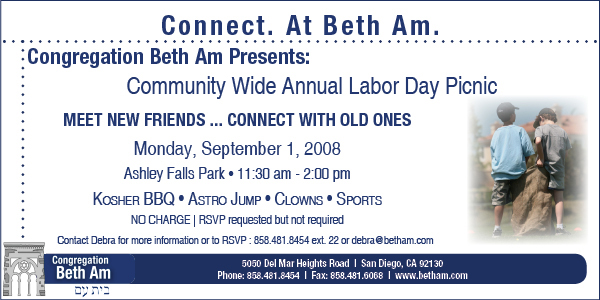
NOW thru SUNDAY, SEPTEMBER 7

FRIDAY, SEPTEMBER 12, 2008 Temple Solel S'more Shabbat
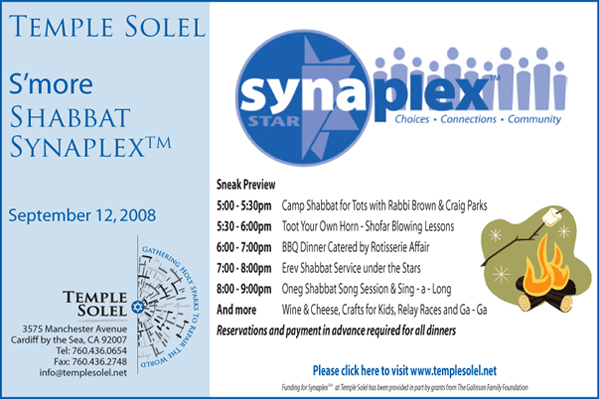
MON., SEPT. 29-THURS., OCT. 9


Become an active supporter of San Diego Jewish World

FROM THE SIDELINES
Interfaith dialogue best at grassroots level
By Rabbi Dow Marmur
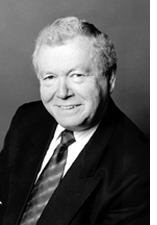 TORONTO, Canada--One of the challenges in contemporary interfaith dialogue is the reluctance of Muslims to get involved. That's why the news that King Abdullah of Saudi Arabia was to host a conference with representatives of different religions was greeted with enthusiasm in many quarters. Though the king isn't exactly known as a champion of religious tolerance, and though pundits suspected political motives behind his initiative, it was nevertheless hoped that the meeting would encourage Muslims everywhere to be more open to encounters with members of other faiths. TORONTO, Canada--One of the challenges in contemporary interfaith dialogue is the reluctance of Muslims to get involved. That's why the news that King Abdullah of Saudi Arabia was to host a conference with representatives of different religions was greeted with enthusiasm in many quarters. Though the king isn't exactly known as a champion of religious tolerance, and though pundits suspected political motives behind his initiative, it was nevertheless hoped that the meeting would encourage Muslims everywhere to be more open to encounters with members of other faiths.
The conference has now taken place. Last month, King Abdullah and his Spanish counterpart King Juan Carlos hosted it in Madrid. The list of participants made it obvious that this wouldn't be a representative gathering. For example, Jews were invited on condition that they didn't come from Israel. The only Israeli scheduled to attend, and even address the gathering, was a spokesman for a small extremist Jewish sect vehemently opposed to the existence of the Jewish state. In the face of protests from other guests, his invitation was later withdrawn.
However, an Israeli moderate did get in. Rabbi David Rosen is one of the staunchest Jewish exponents of interfaith dialogue in the world. As the director of interreligious affairs of the American Jewish Committee, his invitation was sent to the organization's New York office. But Rosen resides in Israel. When he was introduced to his hosts he told them that he came from Jerusalem. The organizers may have been embarrassed but they let him stay.
Not much seems to have been accomplished. Muslim involvement in interfaith dialogue hasn't been stimulated. This confirms the impression that, however high-powered the occasion, meaningful encounters can only take place on a grassroots level.
Christian-Jewish Dialogue of Toronto comes to mind as a role model. It deals with ordinary folk who want to know more about other faiths and to come closer to their adherents. It enables members of churches and synagogues to get to know each other and identify shared goals. It has on the whole avoided the hoopla of lavish dinners and meaningless awards.
Therefore, it seems the best way to include Muslims is to stay far away from royal sponsors and political calculations. In view of the many devout Muslims in Canada who want to be part of Canadian society, it shouldn't be beyond the realm of possibility to engage some of them in productive encounters with Christians and Jews.
One of the major obstacles in the past has been that Middle East conflicts cast a shadow over religious encounters. Perhaps by affirming that the primary objective is to create a better understanding between Canadians – be they Christian, Muslim or Jewish – it may be possible to identify issues that bind us and agree to differ on matters that keep us apart.
Interfaith dialogue isn't about unity, or even unanimity. It's about mutual understanding and respect. And that should be possible irrespective of conditions in other parts of the world today and events in ages past. Think of the tortuous history of the relationship between Jews and Christians and the way in which frank discussion and purposeful co-operation have now become a reality. The common history of Jews and Muslims is less dramatic which, in theory, should make present understanding easier.
Every sincere, non-political Muslim initiative will be welcomed, I'm sure, by Christians and Jews alike. Together, exponents of the three monotheistic religions can make a great contribution to the spiritual fabric of this country.
his article initally appeared in of Toronto. Its author
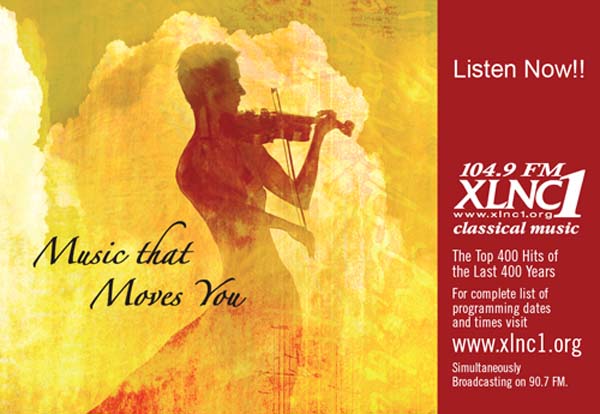


REFLECTIONS
Eco-activists rob U.S. of 'can-do' spirit
By Sheila Orysiek
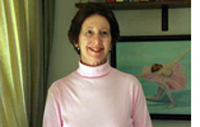 SAN DIEGO—When I was young I was very much a “can-do” person — most young people are. But as I’ve gotten older “can-do” has become “do I want to do?” Conversely when I was younger, I had a hard time saying “no” - but as I’ve gotten older I have more confidence in my decision though it is not pleasant to refuse those asking me “to do.” SAN DIEGO—When I was young I was very much a “can-do” person — most young people are. But as I’ve gotten older “can-do” has become “do I want to do?” Conversely when I was younger, I had a hard time saying “no” - but as I’ve gotten older I have more confidence in my decision though it is not pleasant to refuse those asking me “to do.”
It is one thing to impose boundaries upon oneself, but quite another to impose boundaries on others or on an entire country. While watching the movie Apollo 13 it occurred to me that the America of 1970 is not the America of today. Of course, the technology is different, but more important the thought patterns have changed.
In many ways our country has moved ahead positively such as improvement in the opportunities open for various segments of our population. Improvements to our environment too, such as cleaner rivers, cleaner air, stringent regulations for detrimental emissions, etc. But there is also a rising agenda of negativity to puncture America’s “can-do” balloon. There are those who don’t like a country with chutzpah.
America has been blessed in every way: a lively population mix, natural resources of rivers, oceans, magnificent landscape, vast farms, as well as underground resources of gas, oil, coal, and more. As discoveries continue we find ourselves sitting atop or adjacent (offshore) to significant amounts of these natural resources. Along with this bounty, is the technology to extract and use it with far less impact upon the environment.
The possibility for human error or natural events (hurricanes/earthquakes) to cause damage will always exist. Had humans equated using resources or exploring against the possibility of an accident, we would still be at the doorway to the Garden of Eden covering ourselves with fig leaves and blaming the snake for our problems. We certainly would not drive cars or fly in planes - walking is a much safer and cleaner option.
Though we find ourselves the proprietors of immense natural resources at the same time we are disabling ourselves from using them. We are opting instead to buy these resources and enrich others with the fruits of our labor; sending to them our hard-earned treasure. The amount of money flowing out of our economy into foreign coffers to pay for fuel is the largest transfer of wealth in human history.
Additionally, many of these energy suppliers are our (and Israel’s) declared and undeclared enemies. The strength of America has a direct impact on what happens to Israel; we are the one sure protecting vote in the United Nations Security Council, the one nation able to project power to underpin that vote and the one nation that can and will re-supply an ally such as Israel.
The effort to lower America’s profile and deny it the use of its own resources and even disable it can be found in the agenda of some eco-groups and the political platforms they endorse and support. Drilling for oil today is not like it was even twenty years ago and it doesn’t mean we can’t conserve, use sun, wind or other means where applicable. The platitude that if we started drilling today it will be five years before any oil flows ignores the fact that harnessing wind/sun/other renewable resource sufficiently and efficiently will surely take just as long if not longer. If it takes five years for an oil well to spout - is it not time to get going?
Another aspect of using our own resources is the huge job creation potential for our people; not only those operating the machinery, but those who supply them, sell them houses, food, clothing, cars. The money would then be ploughed back into our economy many times over. This also means more tax revenue for the proprietary state which could translate into more money for education, infrastructure and other necessities.
Instead we have celebrated half measures such as cars that use a mixture of oil and electricity. However, when one plugs in the car to recharge the battery the electricity often comes from a power plant using a non-renewable resource; mostly coal. Even if it were possible to use solar panels to create enough electricity they would cover vast amounts of space which would certainly disrupt land use and animal habitat. And is it possible that petroleum is needed to produce parts of the solar panels? Petroleum is used for far more than fuel: plastics, pharmaceuticals, solvents, dyes, lubricants, waxes, asphalt, textiles, feedstock, fertilizers, coolants and much more.
Even more inexplicable is using food to produce fuel and thereby driving up food prices while driving down food stockpiles. This directly impacts the poorest people living in the poorest places.
If the effect on the environment is the true concern of the naysayers why is the possibility of an oil spill less of a problem because it happens in Saudi Arabia? Is the environment less precious there? Is it acceptable to drill in Nigeria but not in the United States? Can a poor country, such as Nigeria, be as efficient and technologically capable in avoiding accidents? At this time, Nigeria is politically unstable and instability often leads to environmental problems.
In Europe, drilling in the North Sea has been successful for decades without major problems in a terribly stormy area. When hurricane Katrina hit, many oil rigs were shattered, but there were no oil spills of significance. Europe has been using nuclear power without problems while nuclear power here has been halted since 1979.
But, these facts are irrelevant when the political agenda is to punish America for being uppity - powerful - a land of “can do,” - a land of chutzpah. Were we today to set a goal of walking once again on the moon - how many political/social obstacles would be strewn across that path? The carbon footprint would be measured, the cost versus outcome would be decried, the possibility for failure would be emphasized, and just the chutzpah of it would be defined as American braggadocio. How dare America dare.
I remember the argument that while anyone in the world is hungry nothing else - such as walking on the moon or exploring Mars - should be addressed. But the positive spin offs from the NASA programs are legion: so much life saving technology that we now take for granted came from the NASA program.
And using our natural resources might very well address some of the problems of people in need; not using food for energy is one of them, providing jobs is another. We can do all of it - feed the hungry, explore our environs, and use our resources in successful ways.
Ah, but there’s that negative political agenda which says “no” to nuclear (could be an accident), “no” to windmills (might hurt birds and is unsightly); “no” to coal (mines aren’t nice places and smokestack emissions are tricky business), “no” to water power (will affect the fish, algae, etc.); “no” to power plants (not pretty); “no” to oil drilling (pipelines aren’t pretty either although the caribou love ‘em); “no” to offshore oil drilling (platforms aren’t pretty even though they are out of sight of land); “no” to shale (moves too much dirt around); an equivocal “no” to solar (panels take up room, also not pretty).
Well, what’s left? It’s hard to imagine a jet or an ambulance with a sail. Isn’t a political agenda that presents a slate of negatives also responsible to present a concomitant slate of realistic alternatives? Something more than “keep tires correctly inflated?” The United States is surely an important part of the economic engine of the world both as a producer and consumer. To limit that engine is to cause harm in unforeseen ways - such as using food for fuel and thereby hurting someone else’s ability to afford food.
Let’s not commit national suicide by denying ourselves our own resources to satisfy a political agenda which only presents negatives with no realistic possibilities. What country in the history of the world has denied itself the use of its own natural resources? Chutzpah can be a positive thing.


THE JEWISH CITIZEN
Souvenirs not from U.S., Israel, but China
By Donald H. Harrison
 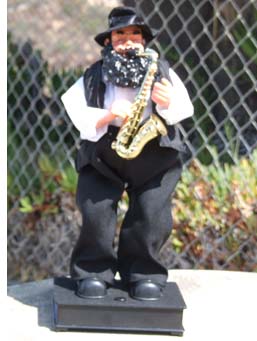 SAN DIEGO—Daughter Sandi Masori brought from her five-week visit to Israel a semi-delightful souvenir gift for me. It is one of those dolls that stands on a platform and performs when you press a button. I have Bill Clinton, Hillary Clinton and George Bush performing dolls (they all sing--badly), and to this collection Sandi added a Chasid who plays Hava Nagila on the saxophone. SAN DIEGO—Daughter Sandi Masori brought from her five-week visit to Israel a semi-delightful souvenir gift for me. It is one of those dolls that stands on a platform and performs when you press a button. I have Bill Clinton, Hillary Clinton and George Bush performing dolls (they all sing--badly), and to this collection Sandi added a Chasid who plays Hava Nagila on the saxophone.
So what do I mean by “semi-delightful?”
If you turn the Chasidic musician upside down and look at the battery compartment, you find that the toy was “Made in China.” What kind of souvenir of Israel is that? And what about the dolls of the Clintons and Bush? Yep, they’re made in China too.
If I receive a Chinese souvenir with the legend “Made in China,” that’s wonderful; but Israeli souvenirs I’d like to see “Made in Israel” and likewise American souvenirs, “Made in the U.S.A.” When toys and other items allegedly depicting one country are made in another, they are robbed of their authenticity.
I understand that the toys probably were made in China because they are less expensive to produce there. That’s okay, if you’re talking about generic items that we all use such as baby strollers, or eye glasses, or children’s toys (provided they are safe, and without lead). Call me old fashioned, but I believe patriotic souvenirs ought to come from the country they depict, and not from some far off factory elsewhere else.
Perhaps I just cannot get with the global economy; maybe at my advanced age of 63, I have become an economic troglodyte. Can you imagine my audacity--if I purchase a U.S. flag lapel pin, I want it to be made in the United States, not somewhere else?
My stubborn resistance to the global economy takes other forms as well. As a young man, I abandoned stamp collecting when countries started mass producing their stamps, not for postage but in an attempt to get philatelists to spend ever-increasing amounts of money on “sets” that were designed to pander to their interests in movies, animals, rock stars, and cartoon characters.
Instead of being about the countries themselves—their natural resources, their historical figures, their places of interest—suddenly stamps focused on western pop culture. Phooey. I didn’t need some Caribbean Island or Arab mini-state to teach me about Mickey Mouse; I wanted stamps to teach me about their countries of origin. When stamps stopped being ambassadors of their countries (including the U.S.A., which issues far too many stamps), I lost interest in collecting them.
My quest for authenticity also extends to restaurants. I hate to go to chain restaurants, no matter how good they might be. I’d much rather go to a mom and pop restaurant. I’d like to taste foods that a creative chef has prepared, rather than a chef responding to company-ordained recipes and stockholder-approved cost-control measures. Moreover, I want the restaurant to have an ambiance reflecting its locality. Unlike people who go to Holiday Inns because there are “no surprises,” I crave variety, originality, and new experiences.
If I am eating in an ethnic restaurant, I want the cooks and the wait staff to be from that country—not from somewhere else. If I want to know what Pra Ram is, I want to be able to ask someone from Thailand, not someone from Mexico. And vice versa, if I am interested in learning more about carne asada burritos.
Sandi did bring home another gift which definitely was made in Israel—three blocks of absolutely delicious halvah. These tasted like they might have been soaked in rum, but probably that was my imagination. Unlike the Hava Nagila-playing Chasid, the halvah won’t last very long; those three bars are diminishing by the day. Nancy and I can’t resist them; they go particularly well with a cup of coffee.


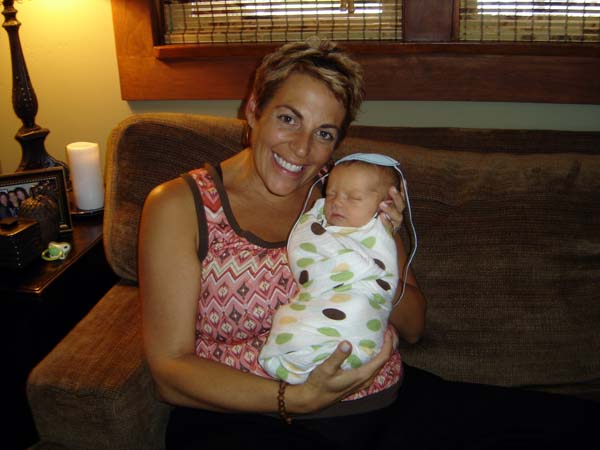
Arrival of family from Israel prompts the
brit debate: who should do it and where?
By Carol Davis
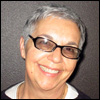 SAN DIEGO -- When I know that my family is coming to visit me from Israel, I get antsy. The closer the time comes to their arrival date, the more the anticipation grows. I don’t see my grandsons as often as I would like although we talk all the time either through Skype, e-mail, phone or IM. It’s just not the same, as I know many of you whose grandkids live far away will attest. And Israel couldn’t be any farther away from San Diego than any other place I know. At least it is for me. The good thing about their living there is that when I go, I don’t have to worry about a hotel room. I have my own little suite in their house, albeit it’s the designated bomb shelter, but it’s all fixed up and it’s mine to come and go as I please. SAN DIEGO -- When I know that my family is coming to visit me from Israel, I get antsy. The closer the time comes to their arrival date, the more the anticipation grows. I don’t see my grandsons as often as I would like although we talk all the time either through Skype, e-mail, phone or IM. It’s just not the same, as I know many of you whose grandkids live far away will attest. And Israel couldn’t be any farther away from San Diego than any other place I know. At least it is for me. The good thing about their living there is that when I go, I don’t have to worry about a hotel room. I have my own little suite in their house, albeit it’s the designated bomb shelter, but it’s all fixed up and it’s mine to come and go as I please.
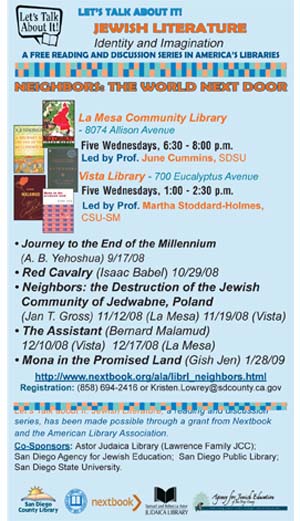 I love visiting my family and extended family in Israel. I just hate getting there! The trip is interminable, uncomfortable and just plain gawdawful! I get the hives just thinking of it. Unlike many of you who might have been making the trip all your lives I have been making it just for the past 10 or so years and, as I said earlier I love seeing them, I just dread the trip. So my plan is to work on having them make more jaunts (they’re young) here than I make there. Ergo...their summer of ’08 visit. I love visiting my family and extended family in Israel. I just hate getting there! The trip is interminable, uncomfortable and just plain gawdawful! I get the hives just thinking of it. Unlike many of you who might have been making the trip all your lives I have been making it just for the past 10 or so years and, as I said earlier I love seeing them, I just dread the trip. So my plan is to work on having them make more jaunts (they’re young) here than I make there. Ergo...their summer of ’08 visit.
Visits here for them are like Disneyland all over again without having to actually go to Disneyland. Although they were both born here and lived here for the first 6 and 7 years of their young lives, when they come back they just like hanging around with their baba. (That’s me). They know all the amusement parks and beaches and every other tourist attraction that brings folks to our fair city. Been there, done that! Now they want to go to the theatre, (more on that in another column) concerts and visit family. WOW! What a concept. While I wrack my brain for things to entertain them with, they’re satisfied being with family. Of course their mother, my eldest daughter, can’t get enough shopping in while she’s here. It’s part of the drill and I expect it will continue no matter what.
The month of August was a special one for our family. Aside from the excitement of a family visit from Israel, we all awaited the birth of my third grandson, their American (first) cousin. So for the first week, we all sat around and stared at my pregnant daughter’s stomach while anticipating the end result. What would he look like, who would and would not be at the hospital and how long would it be before we saw our new baby? One of the questions was answered before we asked. One of the boys had concert tickets the day of the scheduled birth. That let him out. The rest of us were in it for the long haul.
AH! The marvel of modern technology. Not long after my daughter went in to have the baby, (that was a C section) we got word from one of the doctors that we had a beautiful 7l b. 14oz baby boy with a great set of lungs. The hospital corridor was jumping and we could hardly contain ourselves until we saw him. They were right and it was well worth the nine-month wait. But time and tide wait for no man and we were all too soon consumed with our continuing debate about the brit.
During my first pregnancy, the biggest controversy my husband and I had to argue over was who would circumcise the baby. Back then, in 1963, there were no practicing mohelim in the San Diego area nor were there sonograms to determine the sex. Of course we projected a boy, thus the controversy. Both sets of grandparents were still in Massachusetts and the only guidance we relied on was our gut, past religious teachings and traditions.
We called a local rabbi who suggested we bring a mohel down from the Los Angeles area. Mind you, there was no question as to whether the baby would be circumcised. The looming question was “a mohel or a Jewish doctor in the hospital?” My husband was adamant about not having some ‘religious someone’ we did not know do the act. I, being the traditionalist, insisted on the mohel.
That went on until an 8 lb., 6 oz-bouncing girl flew out of me and all the stress of a brit milah was transferred to the stress of nursing which required all of my concentration without benefit of any religious intervention! For the growing Davis family, this discussion and tug continued during two more pregnancies. As fate would have it, we never had to call in a mediator, as two more Davis girls rounded out the family.
Fast forward to the adult Davis girls who are now sitting on the same two ends of the circumcision spectrum their parents sat on over 40 years ago. Seventeen years ago when the first of the grandsons was born, it was a given that one of the biggest parties was going to happen at my house celebrating the birth of the first-born. A big Israeli contingent along with friends from San Diego converged on my home and the brit was, with the exception of my grandson (I’m sure), celebrated with tears of joy and exultation. Another followed with the same enthusiasm. There was no question, no discussion: eight days after the births of both grandsons, brits took place.
When I mention the two sides of the circumcision debate now, I am in no way suggesting that the baby would not be circumcised. The pressing questions were, “when”? and “by whom”? And “should we wait the eight days and have a traditional brit (daughter #1) or have it done in the hospital on the second day and skip the eight days”? (mother and daughter #2)
Things have changed in 45 years, thankfully. Now we in San Diego can lay claim to the fact that we don’t have to look to the north for anything (except maybe water). We have our choice of mohels, doctors and even hospitals. And don’t think this grandmother wasn’t right in the middle of the debate trying to placate both sides, talking to others, getting outside opinions and trying to be a female Solomon.
Finally, I bowed out of the conversation and let the sisters have their say. Both made strong cases for the hospital and the second day and the mohel and a religious ceremony on the eighth. Much to my delight and surprise, it was my two grandsons who tilted the scales in favor of a brit milah. How could we, they said, bring a Jewish baby into the world, bring him up Jewish, give him a Jewish education and not give him the Jewish rite of passage he so deserves? And they say teenagers don’t know anything! Hogwash!
 And so it came to pass that Shaia Michael Davis-Duffy (at left) had the brit he rightfully deserved. His cousin Eytan was the sandak, his cousin Gil played the guitar and was the sandak sheni and his baba and two aunties acted as the kvatterin while his two mothers--my daughter Keri and her partner Laura -- looked on adoringly. His other aunties blessed the candles. A special kiddush cup came with the family from Israel sent by my grandson’s saba and safta who live there. And in another astounding technical advancement (to me anyway), my son-in-law who was in Israel was able to see the whole ceremony from his computer via Skype. And so it came to pass that Shaia Michael Davis-Duffy (at left) had the brit he rightfully deserved. His cousin Eytan was the sandak, his cousin Gil played the guitar and was the sandak sheni and his baba and two aunties acted as the kvatterin while his two mothers--my daughter Keri and her partner Laura -- looked on adoringly. His other aunties blessed the candles. A special kiddush cup came with the family from Israel sent by my grandson’s saba and safta who live there. And in another astounding technical advancement (to me anyway), my son-in-law who was in Israel was able to see the whole ceremony from his computer via Skype.
Dr. Stuart Rubenstein performed a most beautiful and memorable service to the delight and tears of joy to all. What an amazingly gentle and caring doctor and human being. After he finished the ceremony, explaining all the symbols and special meaning of every thing he did, we all felt relief that we had, in fact, made the right decision. Of course, we then ate, another Jewish custom.
What an August! Now the Israeli contingent is back in Israel getting ready for school. Shaia is doing very well and gaining weight to the delight of all concerned. Actually, he is doing just what is expected of him. He sleeps, he eats and he kvetches among other things. What’s remarkable to me through all this is how I can’t stop drinking in the sight of him. He’s so dear and sweet. After a dry spell of 16 years, I can’t help it.
How blessed are we to have had both families here to share this wonderful occasion and have our collective memories of all being together at a time most special in the life of the latest addition to our growing family. Sleep tight you precious little boy.


ADVENTURES IN SAN DIEGO JEWISH HISTORY
Life Begins for Rabbi Cohn
From Southwestern Jewish Press, December 30, 1949, page 3
Members of Congregation Beth Israel are offering congratulations to their spiritual leader, Rabbi Morton J. Cohn, who will observe his 40th birthday on January 12th. When asked about the forthcoming event, the Rabbi remarked “I don’t know what all the fuss is about, I quit observing birthdays sometime ago and I expect to spend this one at my desk and in the performance of my other duties.”
During his 3 ½ years in san Diego, Rabbi Cohn has endeared himself to his many friends in the community with his labors to intensify Jewish life here. Under his spiritual leadership the local Congregation has doubled in membership.
Rabbi and Mrs. Cohn and their two children, Jane and Morton Jr., came to San Diego in August 1946 from Niagara Falls, New York, where he served Temple Beth El for six years.
Rabbi Cohn served as a Navy Chaplain for three years during the war, and saw duty in the South Pacific and at Pearl Harbor. He holds his Navy Commission in the reserve, and by authorization of the Commandant of the 11th Naval District he serves as Jewish Chaplain in the San Diego area.
His services in the community were recognized by election to the Key Club of the United Jewish Fund. For the past three years he has served on the Executive Board of the Community Welfare Council and has filled numerous other positions of civic responsibility and honor. He is in demand as a speaker by local churches and civic groups.
Rabbi Cohn was recently honored with a membership in the Scholia Club, a scholarly discussion group limited to twenty members who must meet certain academic qualifications. The Jewish Press joins other well wishers of Rabbi Cohn in offering warmest congratulations on his 40th birthday.
Community Center Soccer Team
From Southwestern Jewish Press, December 30, 1949, page 5
A nucleus of newcomers have organized a promising soccer team under the expert instruction of Joseph Fagot, former Jewish Featherweight Champion of Europe. The team, which is rapidly growing, now includes Mike Zachs (sic, Zaks), David Grossman, Stan Firestone, Adek Firestone, Sid Sonnabaum, Joe Baumgarten, Jack Rosenberg and Joe Fagot, Captain.
The group meets each Sunday at Zel Camiel’s store at 8th and B from whence they proceed to Balboa Park for a work-out. New talent is cordially invited to try out.
The Jewish Community Center is actively participating in the organization of a Municipal Soccer League. Potential soccer team material may secure additional information by phoning F-0171 and speaking to Irwin Wohl.
Chaim Weizmann Labor Zionist Organization
From Southwestern Jewish Press, December 30, 1949, page 3
By Bess Borushek
The Chaim Weizmann Labor Zionist Organization takes pleasure in inviting their members, friends and the public at large to attend a social gathering on Jan. 7 at 7:30 p.m. at Tifereth Israel Synagogue.
A delightful musical program will be offered with vocal selections by Mr. Wm. Davis, accompanied by Mrs. Belle Cohen. During the many years he lived in Chicago, Mr. Davis, who possesses a fine tenor voice, had been greatly acclaimed by the public for his rendition of operatic arias. Mrs. Cohen in her own right is a musician of marked ability and excels in teaching accompanying and solo work. No one will want to miss this musical treat.
A report will be given by the delegates who attended the 26th annual conference of Histadrut at Los Angeles on Dec. 4th, at which time the sum of $500,000.00 was pledged to support Histadrut in its efforts to help with continued immigration to Israel and promote the industrial and agricultural colonization of the nation. No solicitations of funds will be made at this meeting but it is hoped rather to acquaint the public and stimulate an interest in the work of Histadrut. Following the program, refreshments will be served.
The joint committee of the Labor Zionist groups which includes the Senior and Junior Pioneer Women’s organizations are bending all efforts to promote the sale of Shkolim throughout the city. The importance of the Shekel campaign cannot be overemphasized as it is the method of not only enabling its holder to vote for delegates to the World Zionist Congress to be held in Jerusalem in 1950, but the means of showing Zionist strength in this country.
San Diego Hebrew Home Auxiliary
From Southwestern Jewish Press, December 30, 1949, page 6
The San Diego Hebrew Home Auxiliary {is} using their regular January meeting day, Wednesday, January 4, 1950, to hold a Membership Desert Tea in Temple Center, 3rd and Laurel Streets, at 1:00 p.m.
This will be the day when it is hoped that all ladies not already members of the Auxiliary of the San Diego Hebrew Home will come out and join this fine active group.
The committee in charge of the Dessert Tea have arranged an interesting program with highlights on the work of the Auxiliary for the guests of the Home.
The following ladies comprise the committee who extend a cordial invitation to all members and prospective members to come to the tea: Mesdames Harry Rosenthal, S.Z. Greenberg, A.J. Newman, Moe Hershey, William Moss, Joseph Goldhammer and E.I. Binder.
Reservations for the Tea are being taken by Mrs. Rosenthal at W-5610 and Mrs. M. Greenberg at J-3929.
The guests of the Home were tendered a Chanukah Party by the auxiliary on Tuesday afternoon, December 20th. Mrs. A. Sackheim and Mrs. J. Goldhammer, who were in charge of the party, presented a very enjoyable program and served delicious refreshments.
Shelly Sackheim, son of MR. and Mrs. A. Sackheim, showed movies and Mrs. Lou Moorsteen also showed movies of Israel that she took on her recent trip there.
Among the thirty-five guests were included members of the Happy Old-Timers Club. The Auxiliary presented Chanukah gifts to the guests of the Home.
Mrs. S.Z. Greenberg is president of the San Diego Hebrew Home Auxiliary.
{Return to top}


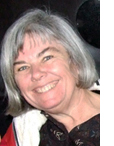 Nancy Harrison Nancy Harrison
cruise & tour specialist
(619) 265-0808
.

FROM THE GATES OF THE NEGEV
Nike's 'Human Race' went well for red-shirted 10k runners in Tel Aviv
By Ulla Hadar
 TEL AVIV—Nike last year started the first worldwide 10K and called it The Human Race. The idea was to get runners all over the world running at the same time. My husband Rafi and I joined the early evening race in Tel Aviv again this year. TEL AVIV—Nike last year started the first worldwide 10K and called it The Human Race. The idea was to get runners all over the world running at the same time. My husband Rafi and I joined the early evening race in Tel Aviv again this year.
Other runners participated in Amsterdam, Austin, Bogota, Buenos Aires, Caracas, Chicago, Istanbul, Johannesburg, Lima, London, Los Angeles, Madrid, Melbourne, Mexico City, Montevideo, Moscow, Munich, New York City, Paris, Portland, Quito, Rome, Santiago, Sao Paulo, Seoul, Shanghai, Singapore, Tokyo and Vancouver.
The idea was to unite people around the world who love running in a common purpose. Everyone, from the professional runner to the day-to-day runner, could enter. I fall somewhere in between these categories. At age 50, I’ve been running for five years and now compete in 20 to 25 competitive runs per year. Besides in Israel, I have run in my native Denmark and also in Carlsbad, California.
To run is a way of life, a passion that once you get hooked, there is no way you will want to quit running.
Rafi and I drove from our home in Kibbutz Ruhama to Tel Aviv in the early afternoon in order to be there in good time before the run. Our first logistical challenge was to find the right parking spot. Instead of parking close to the start we sought a place near the finish line in northern Tel Aviv. Then we walked a few kilometers to the starting point at Rabin Square—a good warm up before the race.
The next task was to find a toilet! There were of course chemical toilets places in the square but with the amount of runners competing for them, we were happy that our 24-year-old daughter Anat lives in apartment nearby. She wasn’t home but thanks to her roommates, we were able to use the restroom—always a good idea before a race.
Thousands of red-shirted people crowded the main square of Tel Aviv. Race organizers decided that you can only run if you wear the official red t-shirt. Last year 5.000 people registered but actually 10.000 ran and that created a problem at the end of the run with insufficient water bottles for the runners.
I found myself last year finishing the run with no water, quite a catastrophe with the high humidity of Israel. This year, I brought my own bottle of water, at least for the beginning of the run. We were advised that anyone not wearing the official red t-shirt would be removed from the course by the police. This helped guarantee that everything would go smoothly.
We know many runners from our frequent participation in races throughout the year, and it is always nice to meet and talk with friends and see familiar faces among a crowd of thousands.
The temperature was about 20 degrees Celsius (68 degrees Fahrenheit), but the humidity was close to 50 percent, so just standing around we were burning calories. We didn’t care; our moods were light because everyone shared the same desire for running, and everyone seemed to be smiling, laughing and talking, excited about what would happen in a few minutes.
Music played noisily, loud speakers roared, and acrobats above us kept us entertained. Finally the starting shot was fired and slowly, slowly a thick snake of people in red t-shirts started to move along the street of Ibn Gvirol towards the Yarkon Park.
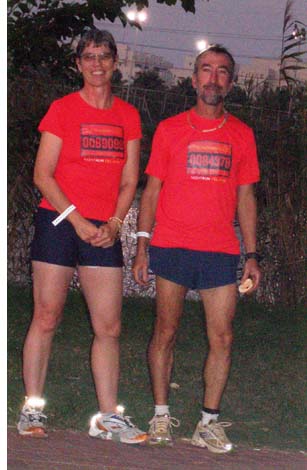 Rafi (with me at right) is a much better runner than I am but a couple of runs a year he "sacrifices" himself and runs together with me at my pace. This I appreciate a lot; to run as a couple is a different experience from running solo. There is a different kind excitement and the fun. Rafi (with me at right) is a much better runner than I am but a couple of runs a year he "sacrifices" himself and runs together with me at my pace. This I appreciate a lot; to run as a couple is a different experience from running solo. There is a different kind excitement and the fun.
Along the route there were DJ's playing music for us, people waving and cheering, and at several places, light tubes had been placed on the ground to help us see better as we ran.
Our adrenalin pumped. The run was pure excitement, adventure and fun. Four water stops assured that no runner would dehydrate.
As we neared the finish line, the roars of the crowd got louder and it was such a great feeling. We finished after 55 minutes and 31 seconds, feeling exhilarated and refueled for our daily lives.
Later we learned that we were among 9,745 runners, approximately 80 percent of them men. About 2 percent of the runners were fast enough to complete the course in under 40 minutes, and about 22 percent took more than an hour. Over the course, we runners consumed 70,000 bottles of water, or approximately 30,000 liters. There were 650 volunteers who helped stage the race, and another 250 police and security personnel.
About 50 photographers were there to cover the race, many of them finding irresistible as a subject Dr. Yaakov Mathathia, who at 75 was the oldest participant. The minimum aged to participate in the race was 15.





SAN DIEGO JEWISH WORLD THE WEEK IN REVIEW
Internationalby Idan Peysahovich in Tbilisi, GeorgiaRabbi Baruch Lederman in San DiegoNationalby Matthew Brooks in Washington, D.C.Campaign 2008: NJDC rejects RJC critique of Biden by Ira Forman in Washington D.C. Judaismby Rabbi Leonard Rosenthal in San Diegoby Natasha Josefowitz in La Jolla, CaliforniaSan Diego Jewish HistorySan Diego Jewish World seeks historic newspapers to archive on the webAdventures in San Diego Jewish History:—December 16, 1949: Beth Jacob P.T.A.
—December 16, 1949: Youth Groups to Stage Chanu-Kapers
—December 16, 1949: Temple Sisterhood
—December 30, 1949: Federation Plans Community Survey
—December 30, 1949: Community to Know Allocations Before Campaign Begins
by Donald H. Harrison in San Diegoby Sheila Orysiek in San Diegoby Henry Bowmanby Binni Brooksby Bess BoroshekInternationalCampaign 2008: Biden wrong on Iran, inconsistent on Israel by Matt Brooks in Washington, D.CThe 'Leviticus Trapsby David Benkof in New York
EducationSan Diego Jewish World seeks historic newspapers to archive on the web
December 16, 1949: December 16, 1949:December 16, 1949: December 16, 1949:#217,#200,#2, Emperor's New Clothes
by Shoshana Bryen in Washington, D.C.a in MelbourneMove to block anti-Semitic 'Terror TV'San Diego Jewish History—December 16, 1949: Letters to Southwestern Jewish Press from Rabbi Monroe Levens, Lou Mogy, Rabbi Baruch Stern, Rabbi Morton J. Cohn, Wm. B. Schwartz, Manuel S. Fisher, Julia Steinman, Marie Berg, Clara E. Breed
—December 16, 1949: Senior Pioneer Women (Negba) Clubby Bruce Lowitt in Oldsmar, FloridaLifestylesby Donald H. Harrison in San Diegoby Lynne Thrope in San Diego
by Congressman Bob Filner in Washington, D.C.Energy Freedom Summit planned in Chicago by Tom Neumann in Washington, D.C. from Mitchell Finkel in North Bethesda, Marylandby Gail Umeham in San Diego by Donald H. Harrison in San Diegoby J(ulia) Kaufman Labor Zionist Shekel Campaign Continuesby Maxwell Kaufman
International
Their limited knowledge does not prevent 'intellectuals' from Middle East punditry by Ira Sharkansky in Jerusalem
National
A private concert on a sultry Philadelphia night by Sheila Orysiek in San Diego
San Diego County
Jewish Family Service showcases its service to refugees at New American Museum reception by Donald H. Harrison in San Diego
San Diego History
—December 2, 1949: Jewish Labor League
—December 2, 1949:Temple Senior League
—December 2, 1949: 'Hay In Your Hair' by P. Kaufman
—December 2, 1949: T.Y.L. 'Hello Dance' by Joel Goldfus
—December 2, 1949: ‘What’s Cookin’ at Troop 99?’
Arts
The future in The Pavilion just goes on and on by Cynthia Citron in Los Angeles
Jewish License Plates
"Feigele" adorns a Lexus in New York City, photo by Bill Swersey
Link to previous editions
< BACK TO TOP
Copyright 2007-2008 - San Diego Jewish World, San Diego, California. All rights reserved. |
|

